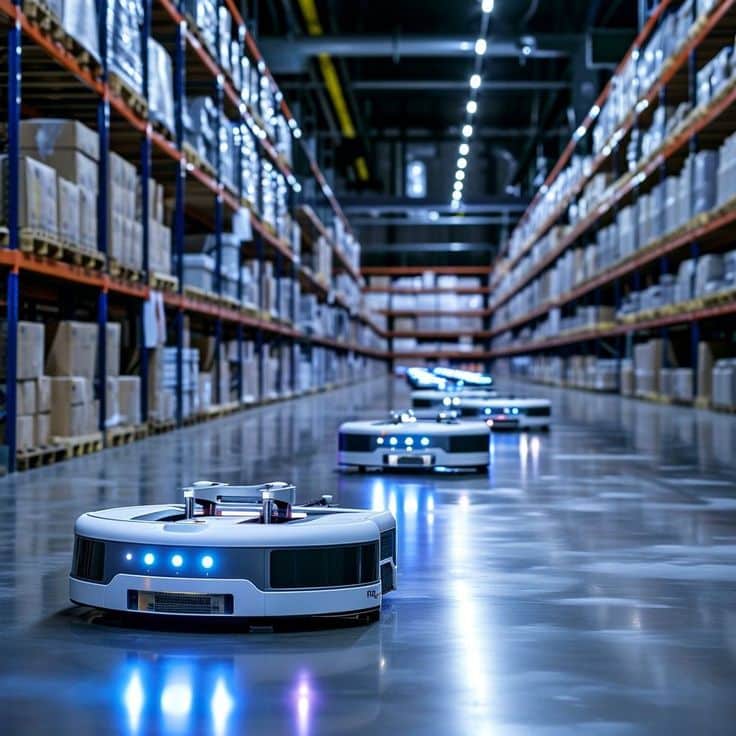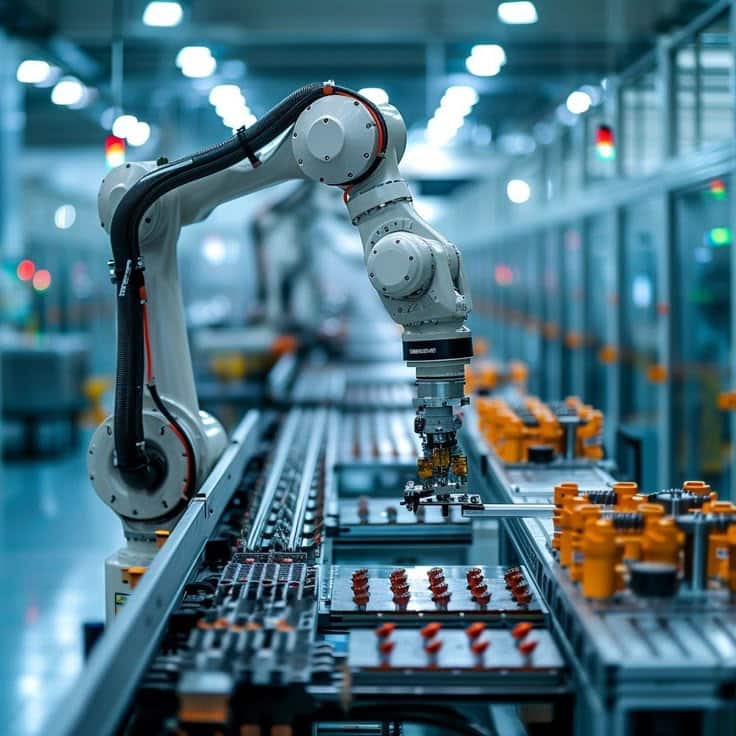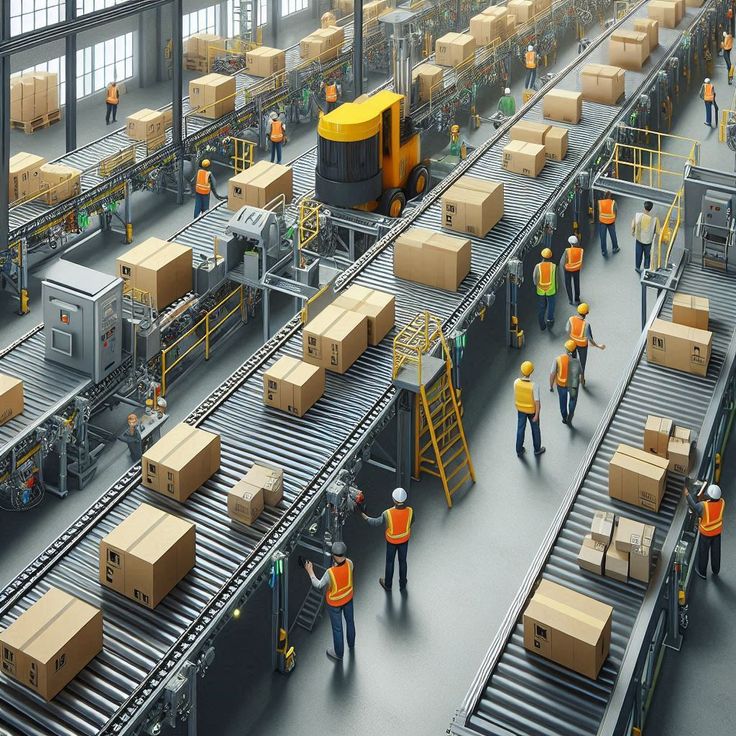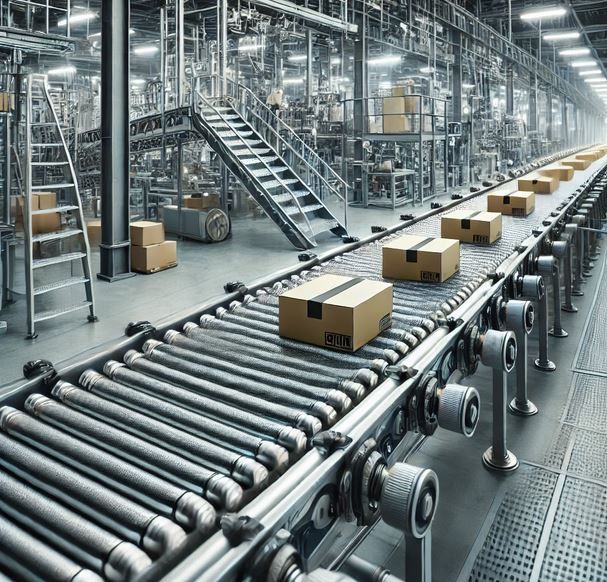Before we get down to the brass tacks of automation in material handling, there are a few facts you should know –
- By the year 2034, the global automated material handling industry is supposed to reach a value of a whopping USD 142.44 billion
- Of all the injuries that happen at the workplace in Canada, 20% to 45% of them can be attributed to improper material handling
- 68% of industrial companies in Canada are a victim to unprecedented downtime at least once every month
How do these point to the relevance of automation in material handling? They set the stage for it. The market for automated material handling is rapidly expanding, and the major contributing factors to that growth include curbing workplace injuries and putting a halt on unplanned downtime. The result? A more productive, cost-efficient and safe work environment that benefits everyone involved.
However, merely introducing smart tech into material handling practices is not enough. It bodes well to know exactly which technological components to include, how to integrate them with smart tech, the benefits and challenges you can expect and the future of automated material handling. Let’s begin!


Key Components of Material Handling Automation
Intelligent material handling involves carefully selecting the right technological components so that peak efficiency can be achieved. If you get them right, each of these components will collaborate to guarantee seamless material storage and movement.
- Conveyors, Robotics, and Automated Storage Systems
The role of conveyors, robotics and automated storage systems in streamlining material handling is significant. When used together, they can take productivity to the next level while bringing down labor costs across all industrial operations.
As conveyors take care of continuous product movement, robotic arms carry out repetitive tasks such as picking, packing and palletizing with zero breaks and flawless execution. On the other hand, automated storage and retrieval systems (AS/RS) help warehouse managers optimize their space, thus improving inventory accuracy.
Integrating each of these is key to high-speed workflows so you can unlock the potential of scalable logistics and lean manufacturing.
- The Role of Roller Conveyors in Automated Systems
Focusing on the role of roller conveyors in particular, these can be your gateway to enhanced material flow. Keeping friction to a minimum, this type of conveyor can easily handle varying load sizes in environments with high throughput. Furthermore, they practically rule out the need for manual intervention. This not only improves workplace safety but also lowers reliance on manual labor.
A great feature of roller conveyors is that they are modular by nature. This makes it easy to equip them with sensors, diverters and other automated systems to ensure seamless operation in manufacturing plants, warehouses and distribution centers alike.


Integration with Smart Infrastructure
The only way to make the most out of your automated material handling tools is to ensure they are backed by smart infrastructure. With the combination of the right software and hardware, you can guarantee system reliability as well as get valuable insights to enable real-time decision-making. Pair your conveyors, robotics and AS/RS with the following tools to maintain uninterrupted operation.
- Connectivity Through IoT and Control Systems
Forming the beating heart of smart infrastructure, centralized control systems and Internet of Things devices allow all automated material handling equipment to communicate with each other in real-time. This constant communication helps in optimizing the flow of materials. It also allows predictive maintenance and instant fault detection so you do not lose valuable uptime to unprecedented issues.
Moreover systems such as PLCs, SCADA and other system networks create an effortless sync between your conveyors, machines and storage units to ensure each of them works in harmony. This results in increased throughput and reduced downtime. Mission accomplished.
- Ensuring Power Stability with Harmonic Mitigation Solutions
Power disruptions are costly. Unreliable power quality can quickly interrupt workflow in smart facilities, putting movement and manufacturing on hold in an environment where time is money. The implementation of harmonic mitigation is a quick-fix to this problem. It can help you eliminate non-linear loads induced voltage distortions, thus stopping damage to sensitive automated systems or disruptions in its tracks.
Investing in harmonic mitigation strategies will not only help you maintain compliance with industry power standards but it will also help you protect your equipment. This, in turn, will ensure machine longevity, operational stability and energy efficiency.


Benefits and Challenges of Automation in Material Handling
Pros aside, automation in material handling is not without its challenges. Though it can make material handling faster, safer and more precise, it can also cause implementation challenges. Before you make the jump, analyze both sides of the automated material handling coin carefully.
- Efficiency Gains and Cost Savings
When it comes to pros, automated systems – be it conveyors, robotics or AS/RS – can significantly reduce errors and manual labor. They can also optimize space usage, so all in all, you can expect gains in terms of faster throughput and lower operational costs. The added safety boost is a bonus. However, these boons might not be immediately visible in terms of ROI. Gradually, the effects of increased productivity and reduced downtime will add up to show real monetary gains.
- Common Implementation Roadblocks
Though benefits might abound, automation is also fraught with challenges. High upfront costs is one of them. System complexity can lead to employee resistance. Plus, since these tools require specialized maintenance, slower adoption rates are also inevitable. Legacy systems can pose integration issues with custom engineering being the only fix. On the other hand, training your staff to use the new tech can be a time and money drain. The only way out? Planning, phased implementation and reliance on experienced vendors can fix them all.


Future Trends in Material Handling Automation
When it comes to the future of automated material handling, expect more intelligent and adaptable systems to take over soon. The big trends to look out for include modular solutions, AI powered maintenance and more, with each of them geared towards improving uptime and scalability.
- AI-Driven Predictive Maintenance
Before AI, it was nearly impossible to analyze real-time equipment data and derive insights from it that could predict potential failures. But with AI, predictive maintenance is not only possible but also leads to reduced repair costs, lower unscheduled downtime and an extension in machinery lifespan. AI’s prowess when extended to robotic arms and conveyors can be instrumental in smarter asset management as well.
- Modular and Scalable Automation Solutions
The future of automation is flexible. Modular systems make incremental scaling of operations easy by enabling quick reconfiguration of different components such as conveyors and AS/RS. For businesses with seasonal peaks and fluctuating demands, this kind of adaptability can lead to better optimization of resources.
Conclusion
The combination of advanced components such as roller conveyors and support systems such as harmonic mitigation can help industrial businesses build a resilient and future-ready material handling operation. From valuable insight to operational stability, the perks of automated material handling are only increasing.
- 0shares
- Facebook0
- Pinterest0
- Twitter0


